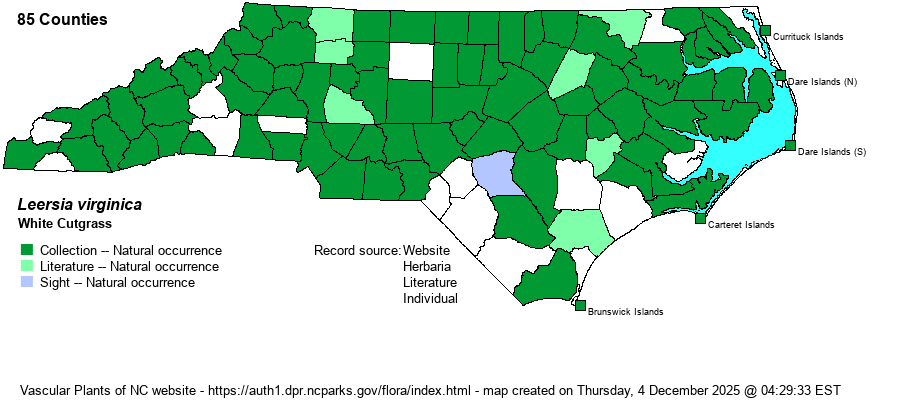| Author | Willdenow | |
| Distribution | Throughout the state, including the Outer Banks and barrier islands. The gap in southern Coastal Plain and Sandhills is due to a lack of high-nutrient rivers (except the Cape Fear, Deep, and Pee Dee rivers).
Que. to MN and SD, south to central FL and TX. | |
| Abundance | Common, but may not be perceived so in the field, due to its small size and late blooming. | |
| Habitat | More-or-less nutrient-rich floodplain forests and bottomlands (mostly brownwater systems), interdune swamp forests, lower slopes of adjacent hardwood-pine forests. |
| Phenology | Flowering and fruiting August-October. | |
| Identification | The stems are weak and often sprawling, with the upper portion ascending and producing a wispy inflorescence of slender, sparse branches. Looking closely, the tiny spikelets are white, flattened, and with bristly margins. It may occur with the similar-looking Japanese Stilt-grass (Microstegeum vimineum), but that invasive species has larger and green spikelets. | |
| Taxonomic Comments | None
| |
| Other Common Name(s) | Most references simply call it White Grass; however, this website, Weakley (2018), and a few others prefer to name all Leersia species as xxxxx Cutgrass. | |
| State Rank | S5 | |
| Global Rank | G5 | |
| State Status | | |
| US Status | | |
| USACE-agcp | FACW link |
| USACE-emp | FACW link |

